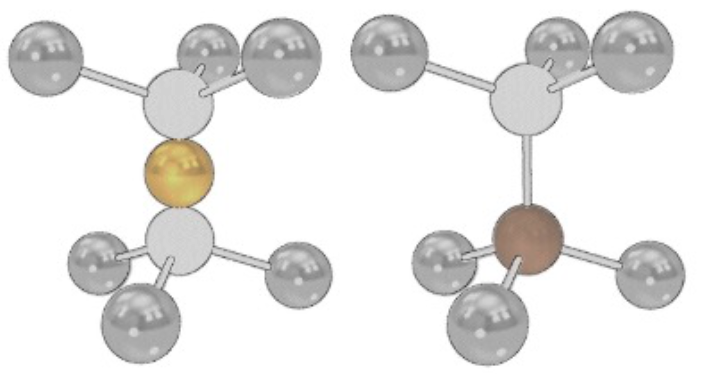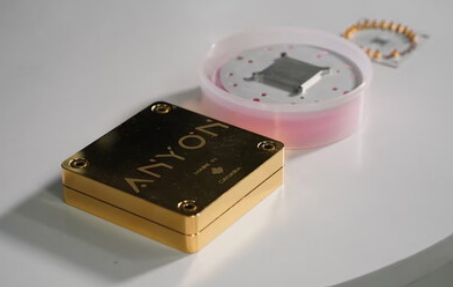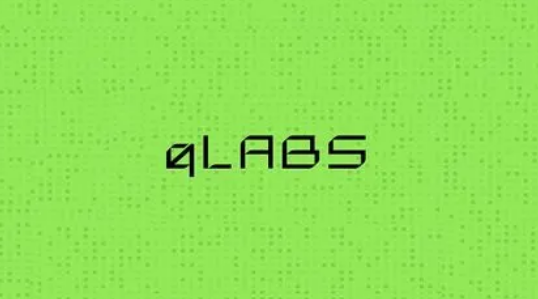Insider Brief
- AWS will work with Element Six, part of the De Beers Group, on a research project to develop new synthetic diamond materials.
- Diamonds have optical and quantum properties that make it uniquely promising for several focus areas for AWS, including semiconductors, quantum networking and quantum communications applications
- Image: These diagrams of the NV (left) and SiV (right) show their atomic configuration inside the diamond lattice. In each case carbon atoms (silver) are displaced by vacancies (white with black outline) and defect atoms (Nitrogen in brown, Silicon in gold). Source: AWS Center for Quantum Networking.
AWS announced a research collaboration with Element Six, part of the De Beers Group, to develop new synthetic diamond materials.
It may not seem like an unusual corporate pairing — and may sound like it lacks a quantum connection — but the partnership makes complete sense, according to a company statement. Diamonds have optical and quantum properties that make it uniquely promising for several focus areas for AWS, including semiconductors, quantum networking and quantum communications applications, among other important uses.
In an AWS blog post, Bart Machielse, of AWS and Daniel Twitchen, Element Six, outline specifically why diamonds are a quantum network’s best friend.

They write: “The core element of a quantum repeater is a memory qubit which interfaces with light. This qubit catches the information encoded on light, stores it, and, together with other nearby qubits, performs error correction to eliminate any errors which may have occurred during communication. To be viable, these memory qubits need to have reliable interactions with light in the visible or telecom domain (ruling out many of the leading qubit candidates from quantum computation, such as superconducting qubits) and preferably be feasible to mass-produce. These requirements make defect qubits, like color centers in diamond, leading candidates as quantum repeater memories.”
Besides being a bit pricey, natural diamonds have a few problems in serving their role in quantum networking. The researchers explain that natural diamond the number of undesired defect atoms reduces the coherence, optical, and spin properties of color centers like the Nitrogen-Vacancy Center (NV) and the Silicon-Vacancy Center (SiV), two classes of diamond defect qubits that have emerged as leading candidates for communications applications.
Synthetic diamonds could help, they add.
“Fortunately, the advent of synthetic diamond growth has made reducing these undesired imperfections possible. Advances in plasma-enhanced chemical vapor deposition (PECVD) over the last 20 years have enabled the growth of individual plates of diamond with sufficient purity and orderliness for quantum applications. PECVD growth enables the formation of diamonds hundreds or thousands of times purer than the Regent Diamond, the famously pure natural diamond on display in the Louvre. In the best PECVD diamond less than one in a million atoms are impurities – compared to one in a thousand for most natural diamond.”
For more information, you can read the complete AWS post.
If you found this article to be informative, you can explore more current quantum news here, exclusives, interviews, and podcasts.


















